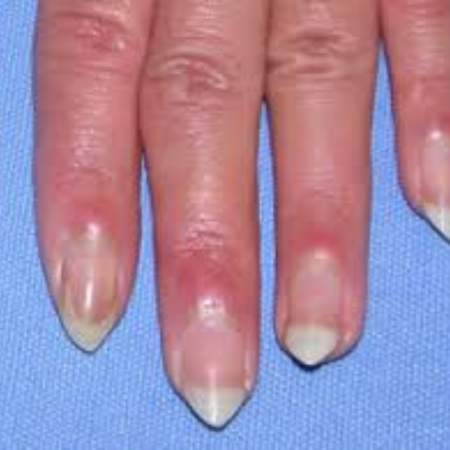Connective Tissue Disorders

Connective tissue disorders (CTDs) refer to a group of conditions that affect the connective tissues in the body. Connective tissues provide support, structure, and elasticity to various organs, joints, and other parts of the body. CTDs can involve a wide range of symptoms and affect multiple organ systems. Here’s a description of connective tissue disorders:
Rheumatoid arthritis (RA): RA is an autoimmune disorder characterized by chronic inflammation primarily affecting the joints. It leads to pain, swelling, stiffness, and eventually joint deformities. RA can also affect other organs, such as the heart, lungs, and eyes.
Systemic lupus erythematosus (SLE): SLE is a chronic autoimmune disease that can affect multiple organs and systems, including the skin, joints, kidneys, heart, lungs, and blood cells. It is characterized by inflammation, joint pain, skin rashes (such as a butterfly-shaped rash on the face), fatigue, and systemic symptoms.
Scleroderma (systemic sclerosis): Scleroderma is a group of autoimmune disorders characterized by excessive collagen production, leading to thickening and hardening of the skin and connective tissues. It can also affect internal organs, such as the lungs, kidneys, digestive system, and blood vessels.
Ehlers-Danlos syndromes (EDS): EDS refers to a group of genetic disorders that affect the structure and function of collagen, a key component of connective tissues. EDS can lead to hypermobility of joints, skin fragility, easy bruising, and various complications related to weak connective tissues, such as joint dislocations and organ prolapse.
Marfan syndrome: Marfan syndrome is a genetic disorder that affects the connective tissues, primarily the cardiovascular system, eyes, and skeletal system. Individuals with Marfan syndrome may have tall stature, long limbs, joint hypermobility, heart valve problems, and vision abnormalities.
Polymyositis and dermatomyositis: These are inflammatory muscle diseases that can cause muscle weakness, skin rashes, and inflammation. They belong to a group of conditions known as idiopathic inflammatory myopathies.
Treatment for connective tissue disorders aims to manage symptoms, reduce inflammation, and prevent complications. It often involves a multidisciplinary approach, including medications to control inflammation and autoimmune responses, physical therapy, occupational therapy, and lifestyle modifications. In some cases, surgical interventions may be necessary to address specific complications.
Connective tissue disorders are complex conditions that require ongoing management and care. If you suspect you have a connective tissue disorder or have concerns about your symptoms, it is important to consult with a rheumatologist or a healthcare professional specializing in these conditions for proper diagnosis and personalized treatment.
